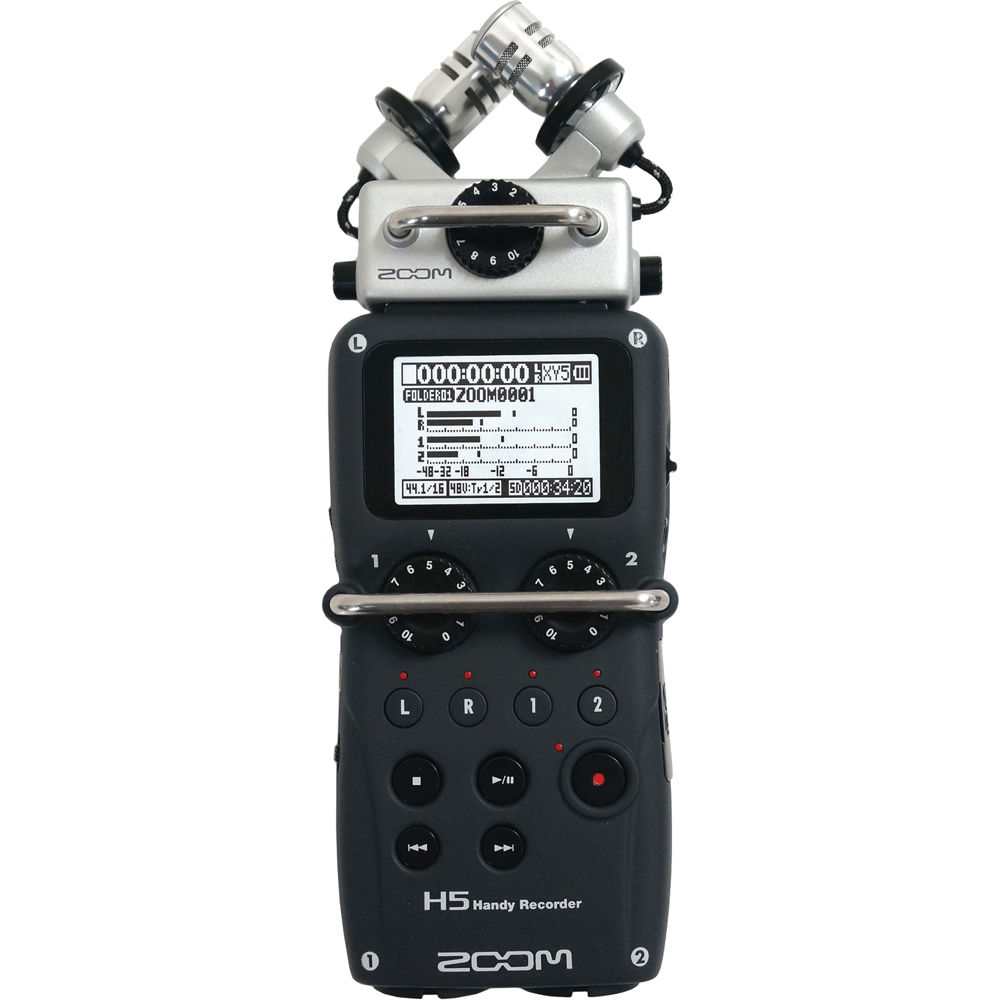Picture this: you’re about to start an important Zoom meeting, and suddenly, your audio device decides to throw a tantrum. Frustrating, right?
Whether you’re working from home, attending a virtual class, or catching up with friends across the globe, clear and uninterrupted sound is crucial. But how do you ensure that your Zoom audio device doesn’t let you down when it matters most?
You might be wondering if there’s a secret to achieving flawless sound quality. The good news is, there is! In this blog post, we’ll dive into everything you need to know about optimizing your Zoom audio device. From picking the right equipment to troubleshooting common issues, we’ve got you covered. Stick around, and by the end of this article, you’ll be ready to elevate your Zoom experience, making every conversation as smooth as possible. Don’t miss out on the tips that could transform your audio clarity from frustrating to fantastic.
Benefits Of High-quality Audio
Experience crystal-clear sound with Zoom Audio Device. High-quality audio improves communication, reduces misunderstandings, and enhances listening experiences. Perfect for meetings, podcasts, and more.
High-quality audio can transform your Zoom meetings from ordinary to exceptional. Imagine being in a virtual meeting where every word is clear, and you never have to ask, “Can you repeat that?” This clarity not only boosts productivity but also enhances your overall experience. Let’s dive into the specific benefits that high-quality audio brings to your Zoom sessions.
Improved Communication
Clear audio ensures that every participant can hear and be heard without distortion. This is especially crucial during brainstorming sessions where ideas fly around rapidly. High-quality audio helps capture nuances in tone and emphasis, making communication more effective.
Reduced Fatigue
Struggling to hear or constantly having to adjust your audio settings can be mentally exhausting. High-quality audio minimizes these distractions, allowing you to focus more on the content of the meeting. This reduction in effort can make long meetings feel less tiring.
Professional Impression
Imagine joining a meeting with crystal-clear sound while others struggle with poor audio. It sets you apart, giving the impression that you value professionalism and are prepared. This can be a game-changer in client meetings or job interviews.
Enhanced Collaboration
Good audio quality fosters a collaborative environment where participants feel more engaged. You can easily discuss ideas, solve problems, and make decisions without the barrier of unclear sound. This encourages active participation and can lead to more productive outcomes.
Accessibility
High-quality audio can be a huge benefit for those with hearing impairments. It ensures that they can follow the conversation without additional strain. By prioritizing clear audio, you make your meetings more inclusive and accessible to all. How much more could you achieve if every Zoom call was as clear as an in-person conversation? Investing in high-quality audio could be the key to unlocking your virtual meeting’s full potential.
Choosing The Right Zoom Audio Device
Choosing the right Zoom audio device can make or break your meeting experience. Clear sound is vital for effective communication. Picking the best device ensures that your voice is heard clearly. It also helps you catch every word spoken by others.
Microphones
Microphones capture your voice and send it to others. USB microphones offer plug-and-play ease. They usually deliver better sound quality than built-in microphones. Condenser microphones are great for quiet environments. They catch every detail of your voice. Dynamic microphones are ideal for noisy settings. They focus on your voice and reduce background noise.
Speakers
Speakers play sound from others during Zoom calls. Laptop speakers might not be loud enough. External speakers can improve sound quality. Bluetooth speakers offer flexibility and freedom from wires. Consider portable speakers for small spaces. Look for speakers with good bass and clear treble.
Headsets
Headsets combine microphones and speakers in one device. They offer convenience and clear sound. Wired headsets provide stable connections. Wireless headsets offer freedom to move around. Noise-cancelling headsets reduce distractions and improve focus. Choose headsets with comfortable ear pads for long calls.
Setting Up Your Audio Device
Setting up your audio device for Zoom can enhance your meeting experience. Clear audio ensures effective communication. Follow these steps to set up your audio device.
Connecting To Zoom
Start by connecting your audio device to your computer. Use USB or Bluetooth for connection. Ensure your device is compatible with Zoom. Open Zoom and log into your account.
Check your device under Zoom settings. Go to ‘Audio’. Select your device from the dropdown menu. Test your microphone to confirm it’s working. Adjust the volume if needed. This helps in avoiding any disruptions during meetings.
Adjusting Audio Settings
Fine-tuning your audio settings can improve sound quality. Navigate to Zoom’s ‘Audio’ settings. Here, you can adjust the input and output levels. Use the ‘Test Speaker’ option to check sound.
Optimize your microphone settings. Disable background noise suppression for clearer sound. Enable ‘Automatically adjust volume’ for better control. Ensure your device is set as the default for smoother operation.
Regularly update your audio drivers. This maintains compatibility with Zoom’s latest updates. Ensuring quality audio enhances your overall Zoom experience.
Credit: ucdavisit.service-now.com
Troubleshooting Common Audio Issues
Experiencing audio problems on Zoom can be frustrating. These issues disrupt meetings and cause confusion. Identifying and fixing audio problems is crucial. This guide helps troubleshoot common audio issues. Improve your Zoom experience with these simple tips.
Echo And Feedback
Echo and feedback are common audio problems. They cause repeated sounds or loud noises. To fix this, check your device’s microphone and speaker settings. Ensure they are not too close to each other. Consider using headphones to reduce feedback. Also, mute your microphone when not speaking. This helps prevent echoing. Ensure only one audio device is active during the call. Multiple devices can cause echoes.
Background Noise
Background noise can disrupt meetings. It’s distracting and makes conversations hard to follow. To reduce background noise, choose a quiet location. Close doors and windows to limit outside sounds. Use noise-canceling headphones for better results. Zoom offers noise suppression features. Enable them in the settings menu. This helps filter out unwanted noises. Always mute your microphone when not speaking. This minimizes background noise during meetings.
Tips For Optimal Audio Experience
Enhancing your Zoom audio device involves basic steps. Adjust settings for clear sound. Position the microphone close for better voice capture. Reduce background noise by choosing a quiet location.
When using Zoom, achieving the best audio quality can make your meetings more productive and enjoyable. Crisp and clear audio ensures that everyone’s voice is heard without interruptions or misunderstandings. Ready to take your audio experience to the next level? Let’s explore some actionable tips that can help you achieve that.
Positioning Your Microphone
The placement of your microphone is crucial for clear audio. Keep your microphone about 6-12 inches from your mouth. This distance helps capture your voice clearly without picking up too much background noise. Avoid placing your microphone directly in front of your mouth. This can cause popping sounds, especially with “P” and “B” sounds. Instead, position it slightly to the side. Have you ever noticed crackling or distortion? It might be too close. Adjusting the distance can prevent these issues.
Using Noise-canceling Features
Zoom offers built-in noise-canceling features that can significantly enhance your audio quality. These features help filter out background noise like typing or a noisy fan. Make sure to enable these features before your meeting. Go to the audio settings and check the options for noise cancellation. You might be surprised at how much clearer your voice sounds with these settings. Test it out before your next call to notice the difference. Incorporate these tips into your routine and observe the improvement in your Zoom audio experience. Is there a tip you haven’t tried yet? Give it a go and see the impact for yourself.
Credit: ucdavisit.service-now.com
Exploring Advanced Audio Features
As you delve into the world of Zoom Audio Devices, you might find yourself wondering about the advanced audio features these tools offer. Whether you’re hosting a virtual meeting or catching up with friends, the right audio settings can make all the difference. Let’s take a closer look at how you can enhance your audio experience with Zoom’s advanced features.
Audio Enhancements
Zoom offers several options to refine your audio quality. Imagine transforming your virtual meeting into a seamless conversation where everyone hears each other clearly. You can adjust the background noise suppression levels to suit your environment. This feature is especially handy if you have a noisy office or kids playing nearby.
Have you ever tried using original sound for musicians mode? It allows you to capture and share music with minimal compression. This is perfect for music teachers or performers who want to share their art without compromising on quality. Experimenting with these settings can lead to clearer and more vibrant communication.
Integration With Other Tools
Zoom’s audio features are not just confined to its platform. You can enhance your audio experience by integrating Zoom with other tools. Picture using Zoom alongside advanced audio mixers or virtual soundboards. This combination can elevate your audio production quality, making it ideal for webinars or podcasts.
Have you considered using Zoom’s API to connect with third-party applications? It opens up possibilities for custom audio processing. Think about the potential of syncing your Zoom meetings with transcription services or language translation tools. What other tools can you integrate to enhance your audio experience?
Next time you use Zoom, explore these advanced audio features. You might be surprised by how much they can improve your meetings and calls. What enhancements will you try today?

Credit: multimedia.journalism.berkeley.edu
Frequently Asked Questions
What Is A Zoom Audio Device?
A Zoom audio device refers to any hardware used to enhance sound quality during Zoom meetings. These devices can include microphones, speakers, and headphones. They improve audio clarity, making communication more effective. Investing in a good audio device can significantly enhance your Zoom experience.
How To Choose The Best Zoom Audio Device?
Choosing the best Zoom audio device involves considering your needs and budget. Look for devices with clear sound quality and comfortable design. Consider compatibility with your system and ease of use. Read reviews and compare features to find a device that suits your requirements.
Can Zoom Audio Devices Improve Meeting Quality?
Yes, Zoom audio devices can significantly improve meeting quality. They provide clearer sound, reducing misunderstandings and enhancing communication. Good audio devices minimize background noise and echo. This makes conversations more engaging and productive. Investing in quality audio equipment can transform your Zoom meetings.
Are Wireless Zoom Audio Devices Reliable?
Wireless Zoom audio devices are generally reliable and offer greater flexibility. They allow movement during meetings without being tethered to your computer. Ensure the device has good battery life and stable connection. Check reviews to verify reliability. Most modern wireless devices offer excellent sound quality.
Conclusion
Choosing the right Zoom audio device elevates your virtual meetings. Clear sound enhances communication, making discussions more effective. Understanding your needs helps find the best device. Consider factors like budget and compatibility. Test different options for quality and comfort. Investing in good audio gear boosts productivity.
Better sound leads to fewer misunderstandings. Your meetings become more engaging and enjoyable. Remember, a good audio device is key to successful online interactions. Make informed choices for smoother virtual experiences. Stay connected with confidence and clarity. Sound matters.





